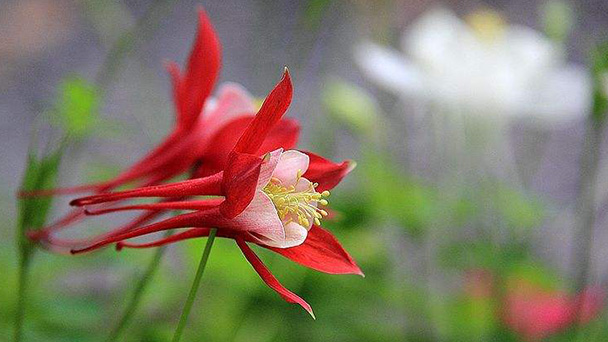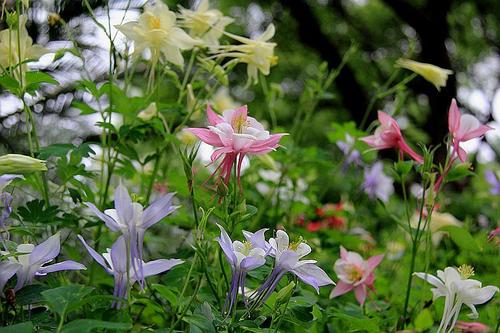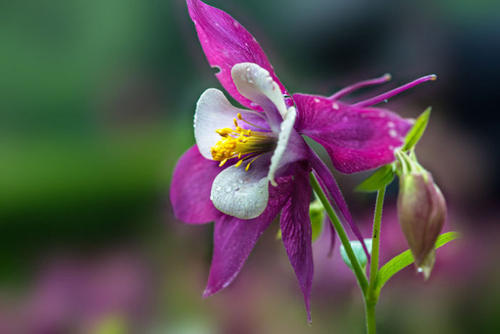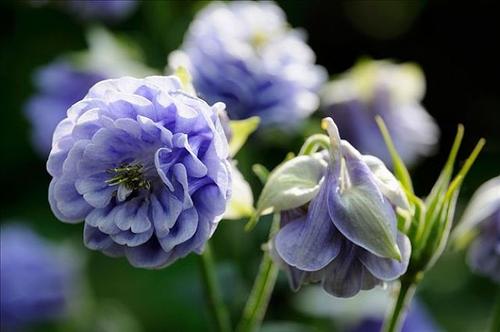How to grow Aquilegia viridiflora
Written by Maggie
Nov 21 2020

In the process of Aquilegia Viridiflora breeding, it is best to change basins once a year. When changing basins, put a layer of sand on the bottom of the basin and then re-enter the basin. In summer, it is necessary to avoid a high temperature environment and control the temperature at around 18℃ ~ 28℃.
Aquilegia Viridiflora picture

1. Soil replacement treatment for Aquilegia Viridiflora
Soil replacement is an essential condition for the cultivation of Aquilegia Viridiflora. In the process of growth, it is best to change the basin once a year, and at this time, the soil should be re-mixed. The permeable soil rich in humus and loose should be selected.
2. Aquilegia Viridiflora maintenance environment
Aquilegia Viridiflora has a strong nature, but it's cold resistance is very poor, and it grows faster in a warm environment. In summer, high temperature should be avoided. When the temperature is higher than 32℃, viridiflora should be placed in a cool place, and it is best to control the temperature from 18℃ to 28℃.
3. Suitable water for Aquilegia Viridiflora
In spring and summer, aquilegia viridiflora should be watered more. Due to the high temperature and fast evaporation of water, it is necessary to keep the soil moist frequently to ensure the normal growth of the root system. In autumn, watering should be reduced gradually, and watering should be done mainly by observing the growth condition, but not frequently in winter.

4. Fertilize properly for Aquilegia Viridiflora
Aquilegia Viridiflora needs to apply sufficient base fertilizer, mainly mature compost or organic fertilizer. During the growth period, if the growth is very good, it is necessary to apply thin phosphorus and potash fertilizer once a month, preferably without nitrogen fertilizer, but not in winter.
5. Aquilegia Viridiflora pruning treatment
In spring, Aquilegia Viridiflora is mainly pruned lightly, mainly by wiping off buds. At this time, excessive branches should not be pruned. In the middle period, poor growing branches and useless perennial flower branches can be cut off, about 30 ~ 45cm short, and only the base should be kept to avoid additional consumption of nutrients.

Latest Updated
- Benefits of Bugleweed - 7 Science-backed Health Benefits
- Bugleweed Dangers & Side Effects - Is It Poisonous?
- How to Plant Evergreen Trees - What You Should Know
- When to Plant Evergreens - Grow Guide for Evergreen Trees
- 12 Wonderful Evergreen Shrubs for Your Garden
- 12 Popular Evergreen Plants with Pictures for Beginners
- When And How To Prune A Lilac Bush Like a Pro
- How to Grow & Care for Lilac Vine (Hardenbergia Violacea)
- Japanese Lilac Tree (Syringa Reticulata) Care & Propagation Guide
- Shumard Oak Pros and Cons - What to Know
Popular Articles
- Winter maintenance of Antirrhinum Majus
- How to Grow Terminalia Mantaly Tree
- How to Grow and Care for Crossostephium Chinense
- How to grow Antirrhinum Majus in spring
- Peristeria Elata (Dove Orchid) Profile: Info & Care Guide
- Underwatered Snake Plant (Sansevieria Trifasciata) - Signs And How To Fix
- How to Care for Brazilian Jasmine Plant (Mandevilla Sanderi)
- How to Grow & Care for Graptopetalum Purple Delight in Summer
- Rosa Chinensis (China Rose): Plant Growing & Care Tips
- How to Care for Baby Sun Rose (Aptenia Cordifolia)